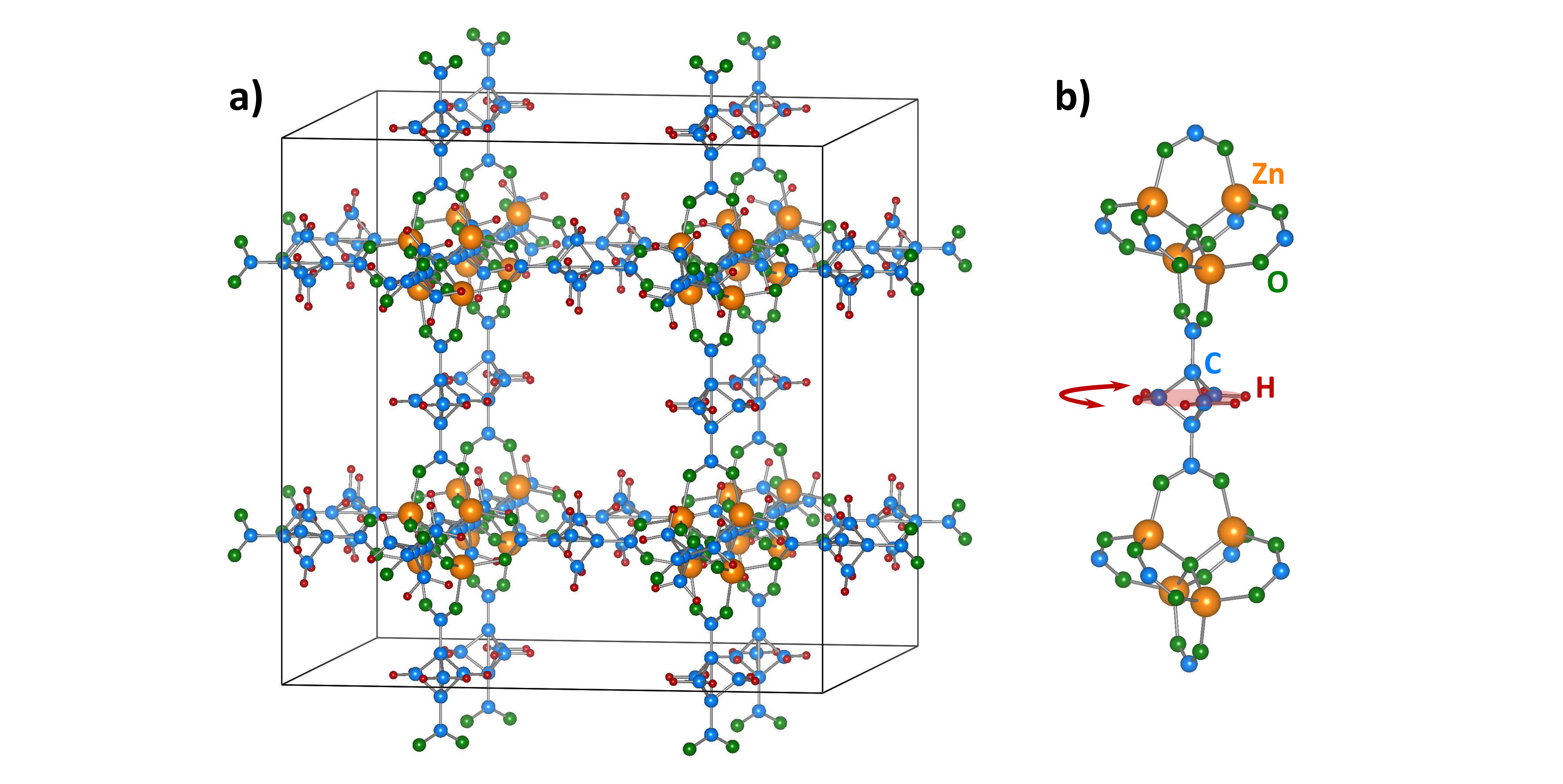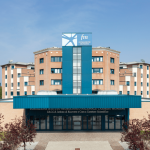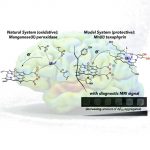Sono stati pubblicati sulla rivista «Nature Chemistry» i risultati di un recente studio delle eccezionali proprietà dinamiche di rotori molecolari ingegnerizzati in materiali porosi. Il lavoro è stato svolto dal Dr. Giacomo Prando e dal Prof. Pietro Carretta presso il Laboratorio di risonanza magnetica nucleare del Dipartimento di Fisica dell’Università di Pavia in collaborazione con il gruppo di ricerca dei Proff. Angiolina Comotti e Piero Ernesto Sozzani del Dipartimento di Scienza dei materiali dell’Università di Milano-Bicocca. (English version below)
L’attività di ricerca sulle macchine molecolari artificiali – al confine tra chimica, fisica e scienza dei materiali – ha come scopo fondamentale l’ingegnerizzazione e il controllo delle proprietà dinamiche della materia al fine di compiere lavoro e operazioni meccaniche utili su scala nanoscopica, come nei casi esemplari degli interruttori e delle navette, o shuttle, molecolari. Nei motori a cui siamo abituati nella vita di tutti i giorni (si pensi per esempio alle autovetture) le componenti rotanti rivestono un ruolo di fondamentale importanza; allo stesso modo, la realizzazione di motori molecolari richiede che siano disponibili unità molecolari rotanti con proprietà accuratamente controllate.
In questo contesto, l’attività di ricerca più recente si è dedicata alla sintesi di strutture cristalline porose dette MOFs, acronimo per Metal-Organic Frameworks, dove i gruppi molecolari rotanti vengono sostenuti da un’impalcatura cristallina fissa che agisce da statore. L’elevata porosità dei MOFs è tale che ogni gruppo molecolare rotante abbia molto spazio vuoto attorno a sé e, quindi, possa risentire in modo trascurabile del circondario cristallino. Seguendo questa strategia è stato mostrato negli anni scorsi che è possibile mantenere un moto rotatorio veloce in direzioni controllate e a temperature ben al di sotto della temperatura ambiente.
La temperatura del sistema è, infatti, un parametro essenziale: in generale, temperature elevate favoriscono i moti molecolari, che tendono invece a essere ostacolati al diminuire della temperatura. Il valore di temperatura necessario ad attivare i moti rotatori è un parametro caratteristico del materiale considerato – in modo improprio, si può pensare che tale valore quantifichi l’attrito tra la molecola e la struttura cristallina. Più è bassa tale temperatura caratteristica e più sarà basso l’attrito.
Lo studio svolto in collaborazione tra i ricercatori di Pavia e di Milano-Bicocca ha mostrato che l’ingegnerizzazione del materiale rappresentato in figura è tale da permettere ai gruppi molecolari di mantenere il loro moto rotatorio con velocità angolari estremamente elevate fino a temperature di -270 gradi centigradi – solo pochi gradi sopra allo zero assoluto. In tali condizioni estreme, il risultato è un sorprendente unicum in letteratura e dimostra proprietà rotazionali eccellenti. Le misure di risonanza magnetica nucleare fino a 1.5 gradi Kelvin svolte dal Dr Prando e dal Prof Carretta sono state dirimenti per la verifica sperimentale di tali proprietà.
L’articolo completo, dal titolo “Fast motion of molecular rotors in metal-organic framework struts at very low temperatures”, è disponibile sul sito di Nature Chemistry al link https://www.nature.com/articles/s41557-020-0495-3
***
The results of a recent study of the exceptional dynamical properties of molecular rotors engineered in porous materials have been published on «Nature Chemistry». The work has been carried out by Dr Giacomo Prando and Prof Pietro Carretta at the Laboratory for nuclear magnetic resonance at the Department of Physics (University of Pavia) in collaboration with the research group of Profs Angiolina Comotti and Piero Ernesto Sozzani at the Department of Materials science (University of Milano-Bicocca).
Research on molecular machines is a very active field lying at the boundary between chemistry, physics and materials science whose ultimate aim is to control the mechanical motion of molecular objects in order to implement useful tasks at the nanoscale. Prototypal examples of these objects range from molecular switches to molecular shuttles. Similarly to everyday-life motors – such as those in cars – where rotating components are of the upmost importance, the realization of motors of molecular size requires the design and engineering of rotating functional chemical groups with highly controlled properties.
In this context, recent research activities have been devoted to the synthesis of porous materials known as MOFs (from Metal-Organic Frameworks), where the rotating moieties are sustained along well-defined orientations by a fixed crystalline structure acting as stator. The high porosity of MOFs guarantees enough free space around each moving molecule, facilitating the rotary motions by limiting detrimental interactions with the crystalline surroundings. In recent years, this strategy has allowed researchers to demonstrate the preservation of fast molecular rotary dynamics along controlled directions and at temperatures well below the ambient condition.
Indeed, temperature is a crucial parameter in the description of the system. Generally speaking, high temperatures favour molecular motions, while low temperatures inhibit them. The temperature value required to activate the rotary motions is a characteristic property of the considered material and, roughly, can be thought of as a way to quantify the friction between the molecules and the crystalline structure: the lower this characteristic temperature, the lower the friction.
The study performed in collaboration between the researchers in Pavia and in Milano-Bicocca has shown that the careful engineering of the material shown in the figure allows the rotating moieties to preserve their ultrafast rotations down to -270 Celsius degrees – just few degrees away from absolute zero. The preservation of fast rotary motions for this kind of systems in such extreme conditions is a surprising and unprecedented result, confirming the exceptional dynamical properties of the studied material. In this respect, the measurements of nuclear magnetic resonance down to 1.5 Kelvin degrees performed by Dr Prando and Prof Carretta were crucial in order to confirm such properties experimentally.
The full article, titled “Fast motion of molecular rotors in metal-organic framework struts at very low temperatures”, is available on the website of Nature Chemistry at the link https://www.nature.com/articles/s41557-020-0495-3
[Copyright immagine di apertura: Dr. Giacomo Prando]




